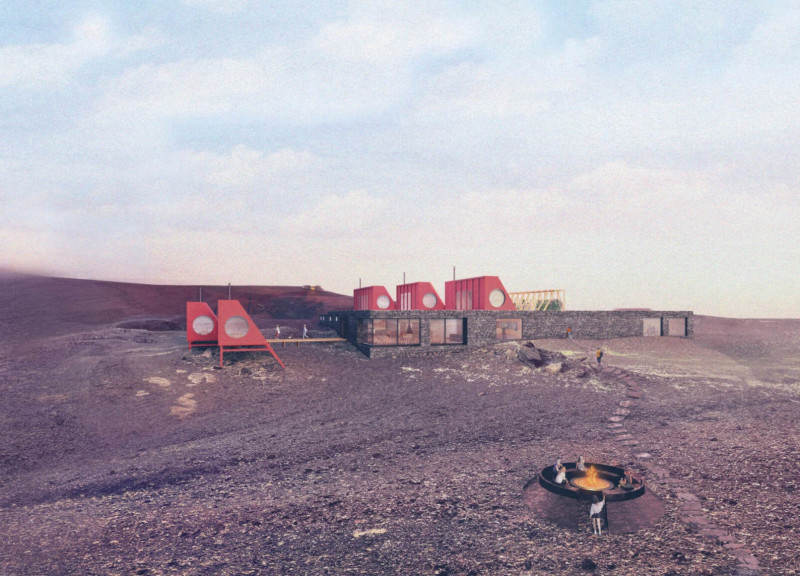5 key facts about this project
From the outset, the project articulates a clear concept that aligns with the needs of its intended users. Its primary function may revolve around community engagement, working as a hub for social interaction, or it may focus on providing a seamless blend of work and leisure spaces. This multifaceted approach to design ensures that the building is not merely a structure, but a catalyst for activity and connection among its occupants.
The materials selected for this project contribute significantly to both its visual appeal and its environmental performance. These include locally sourced materials that integrate the building into its setting, promoting sustainability while providing durability and low maintenance. For instance, the use of natural stone or reclaimed wood reinforces the project’s connection to the landscape, while high-performance glass facilitates natural lighting and minimizes the need for artificial illumination. Metal accents may also be employed, not only to enhance the structural integrity but to add an element of modernity to the overall aesthetic.
Crucial parts of the architecture are highlighted through their thoughtful integration into the overall design narrative. The entrance is likely designed to create a welcoming atmosphere, perhaps utilizing overhangs or awnings to offer shelter while encouraging exploration. Interior spaces may feature open floor plans that promote versatility, allowing for various uses and configurations as the needs of the occupants evolve. Key areas such as communal lounges, meeting rooms, or outdoor terraces can be crafted to foster connections, blurring the lines between indoor and outdoor environments.
Unique design approaches are evident throughout this project, often seen in the fluidity of spaces and the innovative use of light. The architects may explore biophilic design principles, bringing nature indoors to enhance well-being and productivity. Additionally, elements like green roofs or living walls demonstrate a commitment to eco-friendly practices while enriching the aesthetic experience of both occupants and passersby.
Furthermore, the relationship between the project and its surroundings is pivotal; it may consider views, sun paths, and prevailing winds, ensuring that the design not only stands out but also respects and enhances its context. This sensitivity to location fosters a sense of belonging and continuity, making the architecture an integral part of the landscape.
The design outcomes of this project reflect a balanced dialogue between form and function, achieving an architecture that is adaptive and responsive to its environment while remaining accessible to the community it serves. As observers engage with this building, they are invited to explore how architectural plans and sections reveal the complexity and nuance of the design decisions made.
This project exemplifies an architecture that is as much about the experience it creates for users as it is about its physical form. For those interested in delving further into the intricate details of this design, reviewing specific architectural plans and sections will provide invaluable insights into the thought processes behind this thoughtful architectural endeavor. Exploring these elements can enhance one's understanding of the innovative design ideas that underpin the project, illuminating the ways in which architecture can harmonize with its environment and enrich the lives of its users.


























